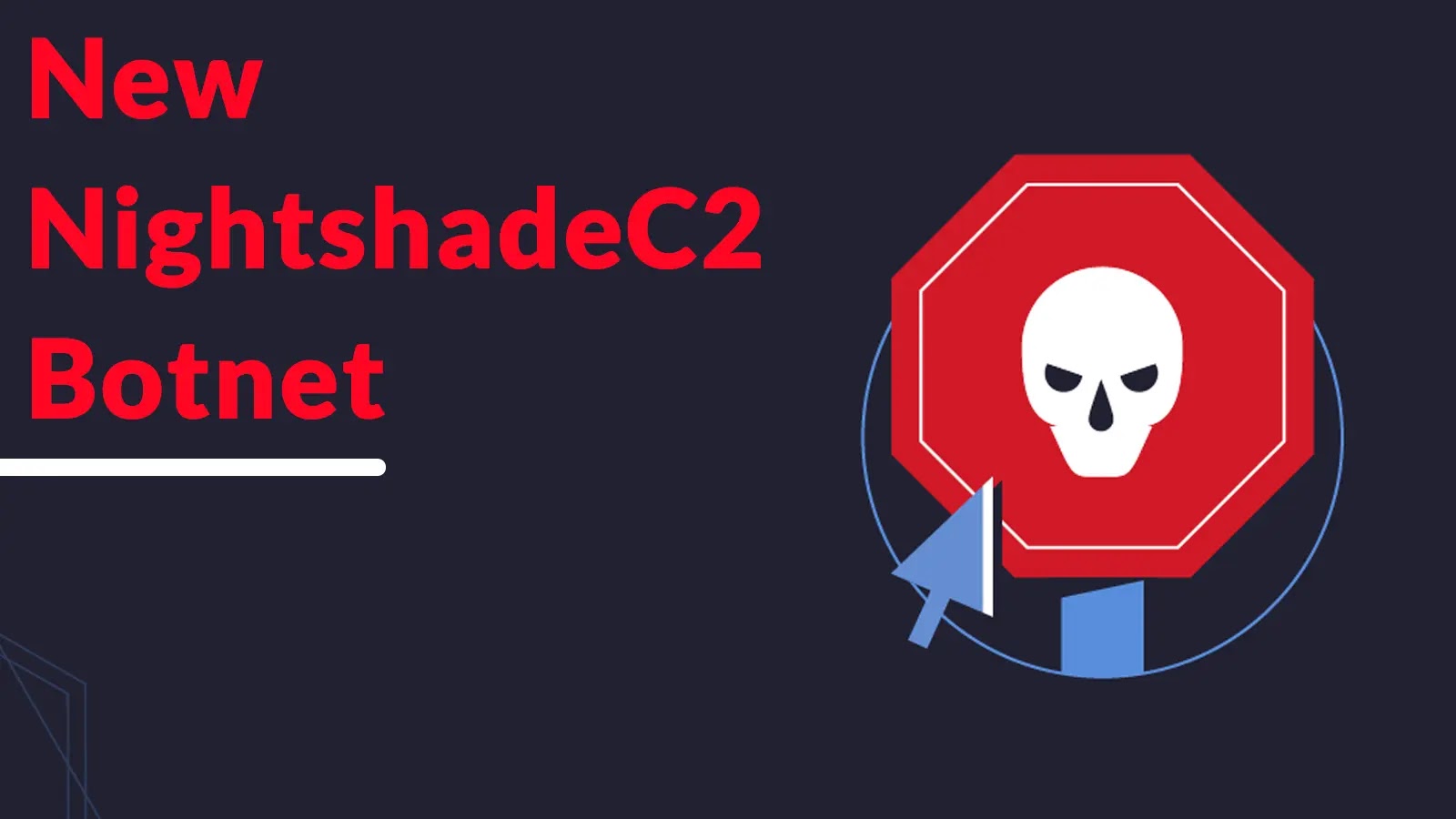
New NightshadeC2 Botnet Uses ‘UAC Prompt Bombing’ to Bypass Windows Defender Protections
Unveiling NightshadeC2: A New Threat Evading Windows Defender with ‘UAC Prompt Bombing’
The cybersecurity landscape just became a shade darker. Security teams have identified a concerning new botnet strain, dubbed NightshadeC2, which has demonstrated an alarming ability to bypass standard Windows Defender protections since early August 2025. This sophisticated malware family, leveraging a unique technique known as ‘UAC Prompt Bombing,’ presents a significant challenge to conventional endpoint security measures. For cybersecurity professionals, IT managers, and developers, understanding the intricacies of NightshadeC2 is paramount to fortifying their defenses.
What is NightshadeC2?
NightshadeC2 is a novel botnet designed to establish persistent, remote-control access on compromised hosts. What makes it particularly potent is its dual-payload approach, utilizing both C and Python-based components. This allows for greater flexibility in its operations and makes detection more challenging. The botnet’s primary objective is to maintain a foothold within infected systems, enabling attackers to execute arbitrary commands, exfiltrate data, or deploy additional malicious payloads.
The Devious Infection Chain: ‘ClickFix’ and UAC Prompt Bombing
The initial infection vector for NightshadeC2 often begins with highly customized and deceptive “ClickFix” landing pages. These pages are engineered to trick users into executing a malicious payload, typically disguised as a legitimate software update or a utility to resolve a perceived system issue. However, the true innovation, and indeed the primary concern, lies in NightshadeC2’s use of ‘UAC Prompt Bombing’ to subvert Windows Defender.
UAC (User Account Control) is a critical security feature in Windows designed to prevent unauthorized changes to the operating system by prompting users for elevated permissions. NightshadeC2 exploits this mechanism by rapidly generating an overwhelming number of legitimate-looking UAC prompts. This barrage of pop-ups is designed to:
- Overwhelm the user, leading to a higher likelihood of them clicking “Yes” out of frustration or confusion.
- Obscure the actual malicious prompt, making it difficult for the user to discern the legitimate from the malicious.
- Potentially bypass certain automated security checks that might flag a single, isolated malicious UAC request.
By forcing the user to inadvertently grant administrative privileges, NightshadeC2 effectively circumvents Windows Defender’s ability to block unauthorized actions, as the user themselves has “approved” the elevation.
Technical Indicators and Behavior
Once successfully executed and having gained elevated privileges, NightshadeC2 exhibits several key behaviors:
- Persistence Mechanisms: The botnet establishes various persistence mechanisms, often leveraging scheduled tasks, registry run keys, or modifying legitimate system services to ensure its survival across reboots.
- C2 Communication: It communicates with command-and-control (C2) servers to receive instructions and exfiltrate data. The use of both C and Python payloads suggests diverse communication channels and obfuscation techniques.
- Stealth and Evasion: Beyond UAC Prompt Bombing, NightshadeC2 likely employs other stealth techniques, such as process injection, obfuscated code, and anti-analysis checks, to avoid detection by security software and analysts.
Remediation Actions and Proactive Defenses
Addressing the threat posed by NightshadeC2 requires a multi-layered approach focusing on user education, rigorous endpoint security, and network monitoring.
- User Education and Awareness: Implement robust training programs to educate users about phishing tactics, deceptive landing pages, and the dangers of clicking on suspicious links or executing unknown files. Emphasize the importance of scrutinizing UAC prompts before granting permissions.
- Principle of Least Privilege: Enforce the principle of least privilege across your organization. Users should only have the minimum necessary permissions to perform their job functions. This limits the damage a successful attack can inflict.
- Endpoint Detection and Response (EDR): Deploy advanced EDR solutions that offer behavioral analysis capabilities. While NightshadeC2 bypasses direct Defender UAC protections, EDR can detect anomalous process behavior, C2 communication patterns, or suspicious file modifications.
- Application Whitelisting: Implement application whitelisting to prevent the execution of unauthorized or untrusted applications. This can significantly mitigate the risk posed by unexpected executable files.
- Network Segmentation: Segment your network to contain potential breaches. If a system is compromised, network segmentation can prevent the botnet from spreading laterally across your entire infrastructure.
- Regular Security Audits: Conduct frequent security audits and penetration tests to identify vulnerabilities and weaknesses in your defenses.
- Patch Management: Ensure all operating systems, applications, and security software are kept up-to-date with the latest security patches. This helps protect against other potential attack vectors.
Tools for Detection and Mitigation
Leveraging the right security tools is crucial in the fight against advanced threats like NightshadeC2.
| Tool Name | Purpose | Link |
|---|---|---|
| Microsoft Defender for Endpoint | Advanced endpoint protection, EDR, and threat intelligence. | https://www.microsoft.com/en-us/security/business/microsoft-365-defender |
| Sysmon | System Monitor tool for detailed logging of process creation, network connections, and file access. Crucial for forensic analysis. | https://learn.microsoft.com/en-us/sysinternals/downloads/sysmon |
| Wireshark | Network protocol analyzer for deep inspection of network traffic and C2 communication. | https://www.wireshark.org/ |
| Volatility Framework | Open-source memory forensics tool for analyzing memory dumps of compromised systems. | https://www.volatilityfoundation.org/ |
| Threat Intelligence Platforms | Aggregating and analyzing threat data to understand new attack techniques and indicators of compromise (IoCs). | (Varies by provider, e.g., Mandiant Advantage, CrowdStrike Falcon) |
Note: While no specific CVE number has yet been assigned relating directly to ‘UAC Prompt Bombing’ as a vulnerability in UAC itself (it’s an abuse of functionality), related privilege escalation techniques are often referenced. For example, similar bypass techniques often involve manipulating legitimate processes that can elevate privileges, see CVE-2023-36874 for a recent example of privilege escalation via a legitimate Windows component.
Key Takeaways for Security Professionals
The emergence of NightshadeC2 underscores a critical evolution in adversary tactics. The shift towards abusing legitimate system features like UAC, rather than relying solely on traditional exploits, makes detection more complex. Organizations must move beyond signature-based detection to embrace behavioral analytics, robust EDR, and proactive threat hunting. Continuous user education and the enforcement of security best practices remain the bedrock of an effective defense strategy against sophisticated threats like NightshadeC2.





